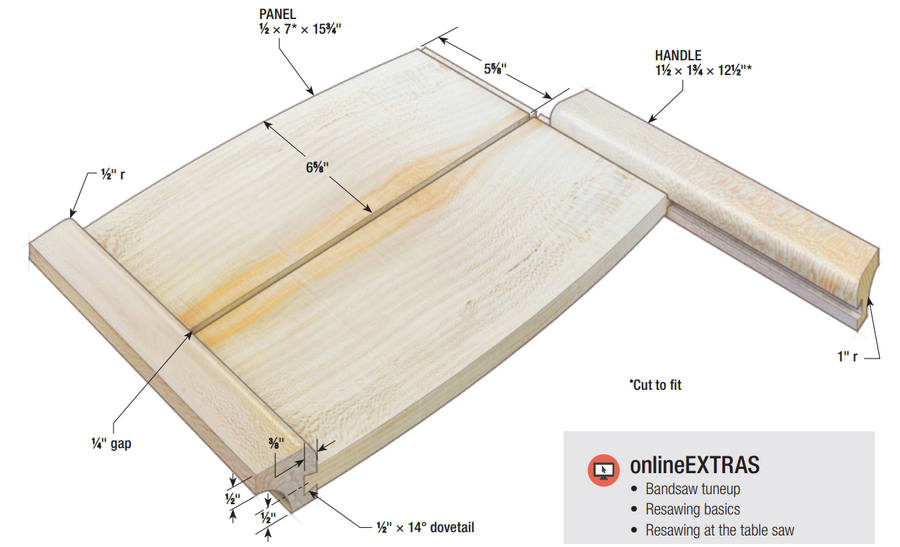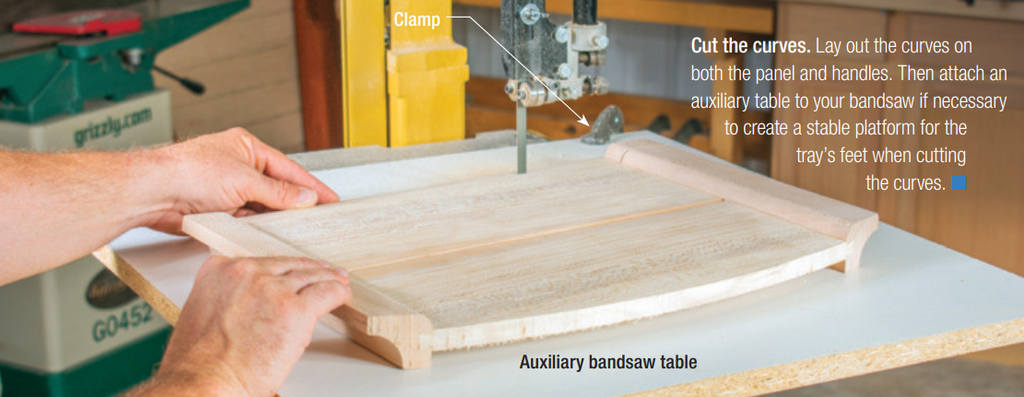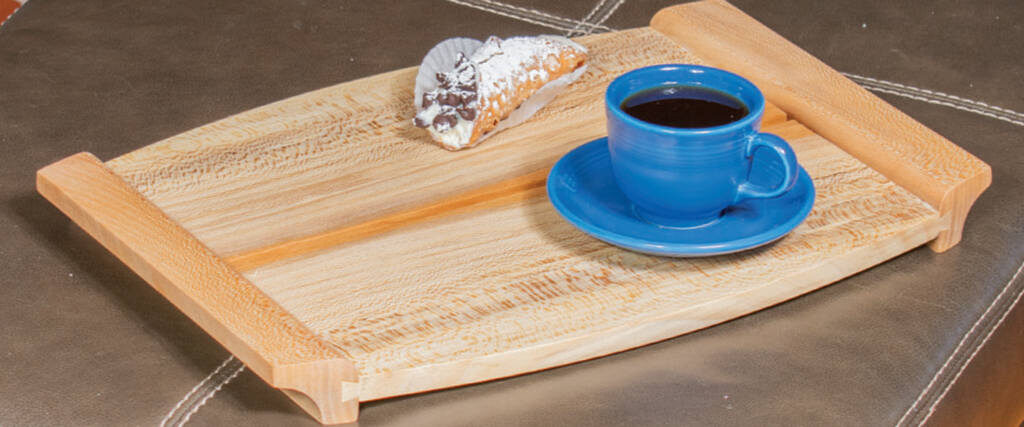By Derek Richmond
The inspiration for making this serving tray came from our living room ottoman. In a house with two rambunctious children, the leather ottoman works better in front of our couch than a coffee table. It offers good storage for games, a comfy surface for weary feet, and soft corners to absorb the inevitable collision. But that soft top makes it less than ideal as a serving surface. Hence the need for a tray.

Made from just four pieces of wood, the design is quite simple with a spare aesthetic that pleases my minimalistic sensibilities. The serving panels are joined to the full-width handles with sliding dovetails. The handles extend below the panels to also serve as feet, giving the tray a wide, stable stance. The trays low profile makes it easy to store (usually right inside the ottoman) while its outward curves provide plenty of serving surface. The majority of the build happens at the router table where a handful of bits (see Buyers Guide) make both shaping the handles and cutting the joinery straightforward operations. I made my tray entirely from quartersawn sycamore, bookmatching the panels for symmetry. Feel free, however, to substitute any hardwood to suit your tastes and even consider selecting contrasting species for a two-tone look.
Simple style in a tasteful tray
The serving portion of the tray is made of a pair of bookmatched panels connected to the handles with sliding dovetails. The gap between the panel pieces mitigates seasonal movement and adds visual interest to the tray. The handles also act as feet, spanning the width of the tray to give plenty of stability. The large coves routed along their lower edges provide good purchase for lifting as well as visually lightening the pieces. The convex curves along the trays edges add serving space along with a certain aesthetic flair.
Mill two handle blanks, leaving each piece a few inches overlong and an inch overwide for safety on the router table—the coves you’ll be cutting are big ones. Rout the coves, then rip the handles to their final width at the table saw with the coves face-up and towards the fence. Finish-sand the handles’ inside face before cutting the dovetail slot—sanding this face after cutting the dovetail can loosen the fit. Rout the dovetail slot in two steps. First chuck a 1/4″ diameter straight bit in your router table to remove the bulk of the waste in a few successively deeper passes. Then rout the actual dovetail slot in a single pass with a 1/2″, 14* dovetail bit. Be sure to leave the dovetail bit set up at this height until you cut the mating tongues in the panels.
Then come back and round the upper corner of the handles with a 1/2″-radius roundover bit.

Dovetail the panels
Mill the panels from thick stock, resawing it to create a bookmatched pair. Also mill a piece of scrap to the same thickness as the finished panels for set up. Leave the dovetail bit’s height the same as it was for routing the slots, but reposition the router tables fence so the bit is mostly buried behind the front surface.
Hold your prepared scrap on end and cut one face, then rotate it and cut the second face. Tweak the fence position until the resulting dovetail tongue is a good fit in the handle slots. Then cut the good panels.

Assemble and finish
Brush glue into the slots halfway across both handles and install the first panel. Then grip that panel in a vice and apply glue to the remaining slots leaving a dry space in the center. Slide in the second panel. After the assembly is dry, lay out the side curves with a fairing stick. Cut the curves at the bandsaw before sanding and finishing the tray. Since food contact is a possibility, I chose a food-safe, hard wax oil (see Buyers Guide). Then serve up some tasty snacks!


